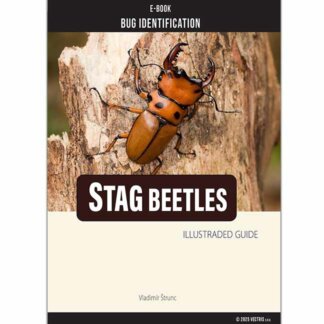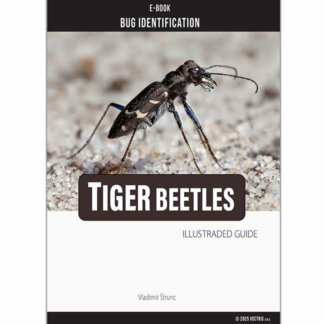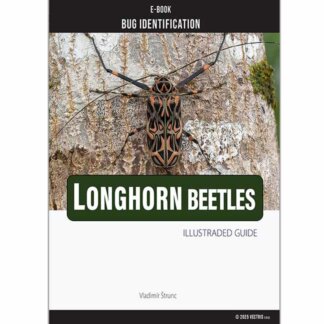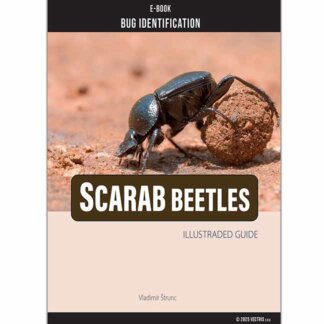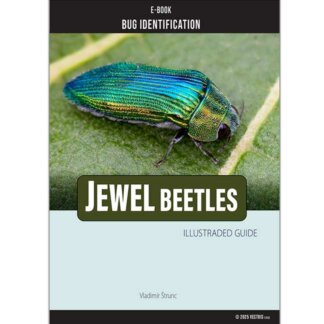Longhorn Beetle bite
Longhorn beetles (family Cerambycidae) can bite humans if mishandled, though this is rare and typically defensive. Their mandibles are adapted for chewing wood, but they may inflict painful bites when threatened.
Beetles
We recommend:
jeweled beetles, ground beetles, longhorn beetles, goliath beetle, stag beetle, carpet beetles
Books about Beetles
Unique pictorial atlases for identifying Beetles:
(2020) Tiger Beetles of the World, Cicindelidae, Illustrated guide to the genera
(2023) Tiger Beetles of Africa, Cicindelidae, Geographical guide to the family Cicindelidae
(2024) Tiger Beetles of Orient, Cicindelidae, Geographical guide to the family Cicindelidae
(2022) Ground Beetles of Africa, Afrotropical Region
(2022) Jewel Beetles of the World, Buprestidae, Illustrated guide to the Superfamily Buprestoidea
(2008) The Prionids of the World, Prioninae, Illustrated catalogue of the Beetles
(2010) The Prionids of the Neotropical region, Prioninae, Illustrated catalogue of the Beetles
Key Details About Longhorn Beetle Bites
Longhorn Beetles bite
1. Bite Characteristics
Pain: Bites cause localized pain lasting days but are not medically significant unless allergic reactions occur.
No Sting: Unlike bees/wasps, longhorns lack stingers and rely solely on mandibles for defense. Longhorn Beetles bite
2. Species Variations
Asian Longhorned Beetle: A major invasive pest in North America and Europe, but its bite is not emphasized in ecological or eradication discussions.
Peruvian Species: A rare exception exists in Peru, where a longhorn beetle species can sting, though this is not typical of the family.
Longhorn Beetles bite
3. Ecological Role
Most longhorns are harmless to humans and play a role in decomposing dead wood. However, invasive species like the Asian longhorned beetle threaten forests by killing trees through larval feeding.
Precautions: Avoid handling beetles unnecessarily. If bitten, monitor for allergic symptoms (e.g., swelling, breathing issues) and seek medical care if severe reactions occur.
Longhorn Beetle Bites: What You Should Know
Longhorn beetles, members of the Cerambycidae family, are a diverse group of insects recognized by their exceptionally long antennae—sometimes longer than their bodies. While they are not typically aggressive toward humans, these beetles can bite if they feel threatened or are mishandled. Although longhorn beetle bites are not common, it’s important to understand the potential effects and how to respond if one occurs.
Are Longhorn Beetle Bites Dangerous?
Generally, longhorn beetle bites are not considered dangerous. Most species do not possess venom, and their bites are not poisonous. However, the beetle’s strong mandibles can cause a sharp pinch that may lead to localized pain. The discomfort typically fades within 24 to 48 hours.
Key Points About Longhorn Beetle Bites
1. Pain and Duration
Longhorn beetle bites can cause an immediate, sharp pain due to their strong jaws. The affected area may become red or slightly swollen, and the pain can persist for up to two days, depending on the individual’s sensitivity.
2. Allergic Reactions
In rare cases, individuals may experience an allergic reaction to the bite. Symptoms of an allergic response can include:
Itching or hives
Swelling beyond the bite area
Difficulty breathing
Dizziness or heart palpitations
In extreme cases, anaphylactic shock may occur. Immediate medical attention is necessary if any of these symptoms develop.
3. Non-Poisonous Nature
Most longhorn beetles lack venom glands, meaning their bites are not toxic. Their primary defense mechanisms are physical (biting, flying away, or playing dead) rather than chemical.
4. Handling Precautions
Although these insects are not generally aggressive, they may bite if restrained or handled improperly. It is best to observe longhorn beetles without touching them, especially in the wild. If handling is necessary (e.g., for research or relocation), wearing gloves is recommended.
Exceptions and Special Cases
Asian Longhorned Beetle (Anoplophora glabripennis)
This invasive species, known for damaging hardwood trees, does not typically bite humans and poses little threat in terms of personal injury. However, its impact on ecosystems makes it a major concern in forestry and agriculture.
Stinging Longhorn Beetle (Rare Peruvian Species)
An unusual discovery in Peru revealed a rare species of longhorn beetle capable of stinging, a trait not seen in most of its relatives. This species remains an exception and is not representative of the group as a whole. The sting is believed to serve as a defense mechanism in response to threats from predators.




